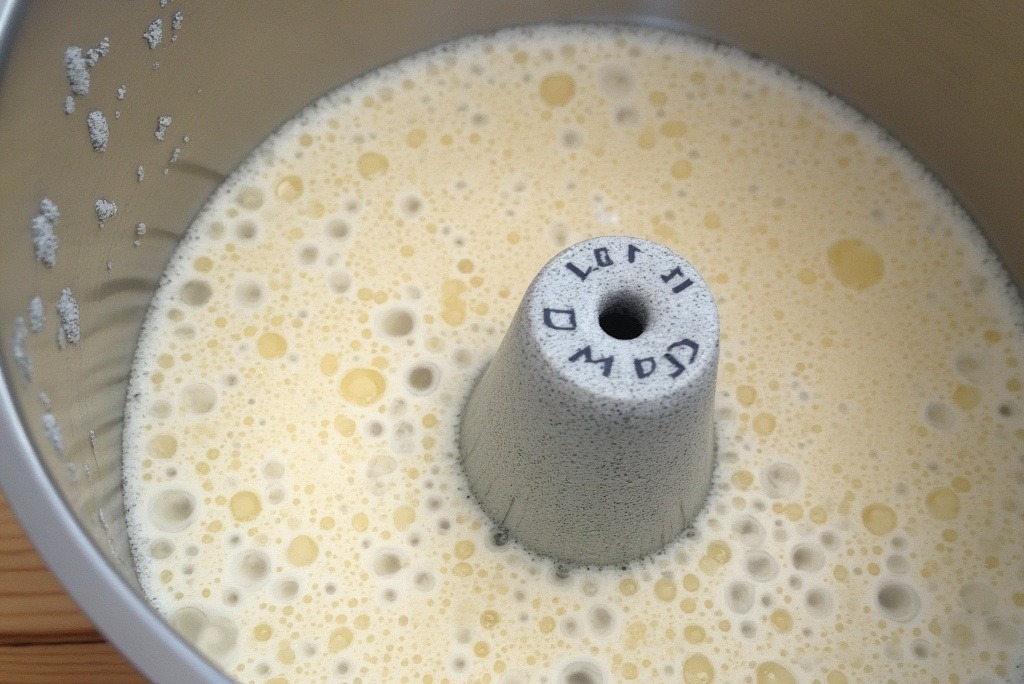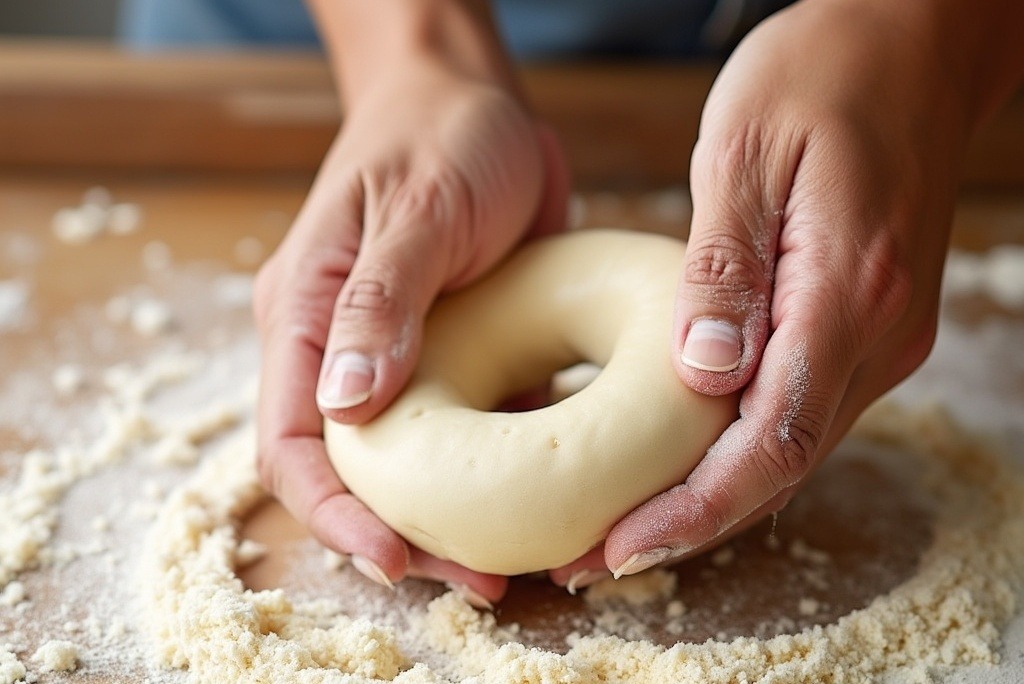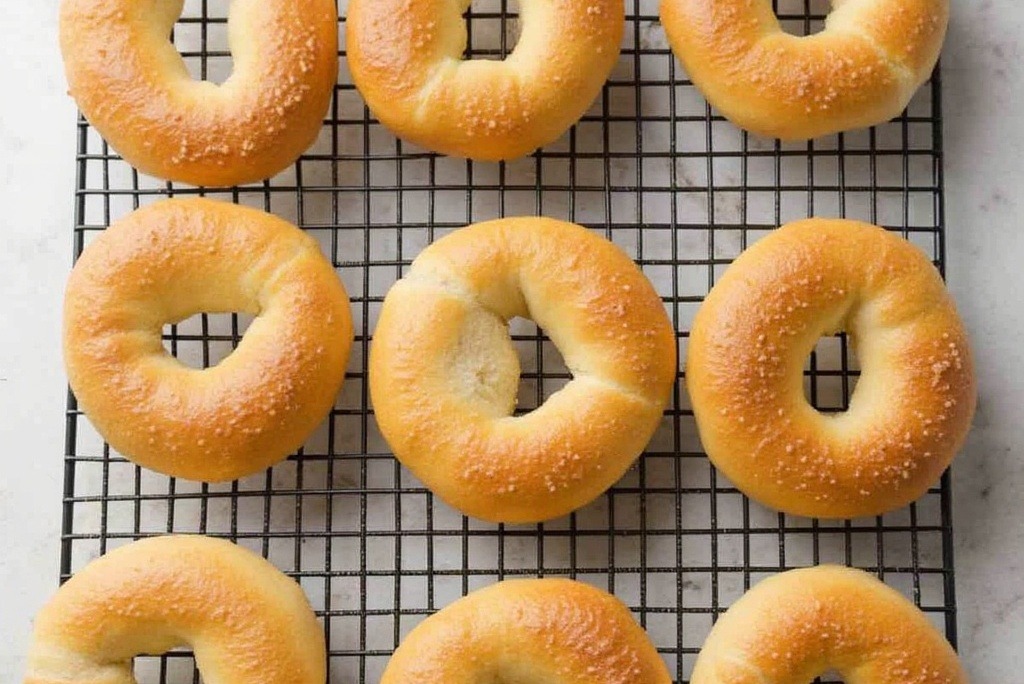Introduction: The Popularity of Gluten-Free Bagels
Over the past few years, gluten-free bagels have grown in popularity, especially among those with celiac disease, gluten intolerance, or those simply seeking healthier alternatives. These bagels are made without wheat, barley, or rye, providing a safe and tasty option for those who need to avoid gluten. But even beyond health concerns, gluten-free bagels have won the hearts of people who want to try something lighter or follow a gluten-free lifestyle.
In this article, we will explore what makes gluten-free bagels so appealing, their ingredients, and how to enjoy them. Whether you are interested in making them yourself at home or buying pre-made ones from your local store, you’ll find the perfect gluten-free bagel to satisfy your cravings. Let’s dive in!
What Are Gluten-Free Bagels?
Gluten-free bagels are, quite simply, bagels made without gluten, the protein found in wheat, barley, and rye. Instead of wheat flour, these bagels use gluten-free alternatives, such as almond flour, rice flour, or tapioca flour. The absence of gluten means that people with celiac disease or gluten intolerance can safely enjoy them without worry.
Why Choose Gluten-Free Bagels?
There are several reasons why people choose gluten-free bagels. For some, it’s a matter of necessity due to medical conditions like celiac disease or gluten sensitivity. These individuals must avoid gluten to prevent uncomfortable digestive issues and more severe long-term health problems.
On the other hand, many people choose gluten-free foods as part of a broader lifestyle choice. For some, cutting out gluten helps with digestion, improves energy levels, and supports weight management. Studies and anecdotal evidence suggest that reducing gluten intake might even contribute to a reduction in bloating, fatigue, and discomfort.
But it’s not just about health. Many are simply curious to try gluten-free foods and enjoy the variety and flavors they bring. These bagels provide a tasty option for anyone who wants to eat a little healthier, feel lighter, or simply enjoy an alternative version of a traditional favorite.
Gluten-Free vs. Traditional Bagels
When comparing gluten-free bagels to traditional bagels, the main difference lies in the flour. Traditional bagels are made with wheat flour, which contains gluten, a protein responsible for giving bagels their chewy texture. However, gluten-free bagels are made with alternative flours that do not contain gluten, which can affect their texture.
Because gluten plays such a crucial role in creating the chewy, dense texture of traditional bagels, making a gluten-free bagel requires some creative baking techniques. For example, gluten-free bagels might use binding agents like xanthan gum or psyllium husk to give the dough structure and elasticity.
Though gluten-free bagels may not have the same chewiness as their wheat-based counterparts, the best versions can still be delightfully soft, fluffy, and satisfying. With the right ingredients and techniques, gluten-free bagels can rival traditional bagels in both flavor and texture. They are a wonderful option for people who are gluten intolerant or anyone looking to try something new.
Ingredients in Gluten-Free Bagels
Creating the perfect gluten-free bagels requires a thoughtful selection of ingredients. Since these bagels are made without gluten, which normally provides structure and chewiness, alternative flours and binding agents must step in to achieve the desired texture and flavor. Let’s take a closer look at the essential ingredients that make this possible.
Common Gluten-Free Flours
- Almond Flour: First and foremost, almond flour adds a rich, nutty flavor to the dough. Made from finely ground almonds, it contributes a dense texture that pairs well with lighter flours. In fact, it is often used alongside other gluten-free flours to prevent the dough from being too heavy.
- Rice Flour: On the other hand, rice flour is light and powdery, which makes it perfect for creating a soft, delicate crumb in the dough. It’s commonly used in gluten-free baking and balances out the denser flours, helping to achieve a lighter texture.
- Tapioca Flour: In addition to rice flour, tapioca flour plays a critical role in adding elasticity and moisture to the dough. This is essential for giving the bagels that desirable chewy texture. Moreover, it helps the dough hold together, preventing it from crumbling.
- Sorghum Flour: Another flour that adds structure is sorghum flour. This flour is high in fiber and helps bind the dough, giving it a more hearty texture. Not only that, but it adds a mild sweetness that enhances the overall flavor profile of the bagels.
- Oat Flour: Additionally, oat flour is another key ingredient that adds a mild sweetness. It helps retain moisture, preventing the bagels from becoming dry. Furthermore, oat flour contributes to the softness and lightness of the bagels, making them more enjoyable to eat.
Binding Agents
Since gluten isn’t present to bind the dough, other ingredients must take its place. These binding agents help create the chewy texture and prevent the dough from falling apart. Without these, the dough would likely be too fragile.
- Xanthan Gum: For instance, xanthan gum is one of the most commonly used binders. It plays a vital role in providing elasticity and structure, effectively mimicking the work that gluten would normally do.
- Guar Gum: Similarly, guar gum serves the same purpose as xanthan gum by helping thicken the dough. It also helps the dough retain moisture, contributing to a soft and airy texture.
- Psyllium Husk: Another excellent binding agent is psyllium husk. It’s a natural fiber that not only provides structure but also helps keep the dough moist. This fiber also helps the dough rise, improving the bagels’ final texture.
- Chia Seeds: Additionally, chia seeds can also act as binders. When soaked, they form a gel-like consistency, helping to hold the dough together. Besides their binding properties, chia seeds are also high in fiber and omega-3 fatty acids, which add nutritional benefits to the bagels.
Other Key Ingredients
- Yeast: Of course, yeast is a must for any bagel recipe. It’s the ingredient that helps the dough rise, creating that signature airy texture. Be sure to use gluten-free yeast to avoid any cross-contamination. This is crucial for ensuring your bagels are safe to eat.
- Sweeteners: A small amount of sugar or honey is typically added to activate the yeast and encourage the dough to rise. Additionally, sweeteners like maple syrup add a mild sweetness to the dough that complements the savory toppings.
- Olive Oil or Butter: Furthermore, fat is an essential component of bagel dough. Olive oil or melted butter not only contributes to the flavor but also ensures a tender dough and a crisp, golden crust once baked.
- Salt: Lastly, salt is a crucial ingredient. It enhances the other flavors in the dough and helps the yeast activate, ensuring that your bagels rise properly.
How to Make Gluten-Free Bagels at Home
Making your own gluten-free bagels at home can be a fun and rewarding experience. With the right ingredients and techniques, you can create soft, chewy bagels that rival traditional ones. Here’s a simple, step-by-step guide to help you get started.
Ingredients
- 2 cups gluten-free all-purpose flour
- 1 tablespoon xanthan gum (or guar gum)
- 1 packet (2 ¼ teaspoons) active dry yeast
- 1 tablespoon sugar (or honey)
- 1 teaspoon salt
- 1 cup warm water
- 2 tablespoons olive oil or melted butter
- 1 egg (optional, for egg wash)
- Optional toppings: sesame seeds, poppy seeds, everything seasoning
Instructions
Activate the Yeast

Start by combining warm water and sugar (or honey) in a small bowl. Stir the mixture until the sugar dissolves, then sprinkle the yeast on top. Let it sit for 5-10 minutes until it becomes frothy. This step is crucial for activating the yeast, which is responsible for making the dough rise and giving it a light texture.
Mix the Dry Ingredients
In a separate large bowl, whisk together the flour, xanthan gum, and salt. Make sure the dry ingredients are well combined. Xanthan gum plays a critical role in providing the dough with elasticity and chewiness, helping mimic the traditional bagel texture that gluten usually provides.
Combine Wet and Dry Ingredients
Once the yeast mixture is frothy, pour it into the bowl with the dry ingredients. Add the olive oil or melted butter, and stir the mixture until a dough forms. The dough should be slightly sticky, but firm enough to hold its shape. If the dough is too dry, add a little extra water to reach the right consistency.
Knead the Dough

Transfer the dough to a lightly floured surface (use gluten-free flour for dusting). Knead the dough for about 5 minutes, ensuring it becomes smooth and elastic. Since gluten-free dough tends to be stickier than traditional dough, add just enough flour to keep it manageable. Kneading helps improve the dough’s texture, which is essential for making great bagels.
Shape the Bagels
Once the dough is ready, divide it into 8 equal portions. Roll each portion into a ball, then gently poke a hole in the center with your finger. Stretch the hole until the dough forms a ring. Be careful not to make the hole too small, as it may close up during baking.
Let the Dough Rise
Place the shaped dough on a parchment-lined baking sheet, ensuring there’s enough space between each one. Cover them with a clean towel and let them rise for 30-60 minutes. The dough should puff up during this time, which is crucial for creating that light and airy interior.
Boil the Bagels
Bring a large pot of water to a boil, adding a pinch of salt. Once the water is boiling, carefully drop each bagel into the pot. Boil them for 1-2 minutes on each side. This step helps create the chewy texture and golden color that makes bagels so special. After boiling, remove them from the water and place them back on the parchment-lined baking sheet.
Add Toppings (Optional)
If you’d like to add toppings, brush the bagels with an egg wash (a mixture of one egg and a tablespoon of water) for a glossy finish. Then, sprinkle with toppings such as sesame seeds, poppy seeds, or everything seasoning.
Bake the Bagels

Preheat your oven to 375°F (190°C). Bake the bagels for 25-30 minutes, or until they are golden brown and sound hollow when tapped on the bottom. This indicates they are fully cooked with a soft interior and crisp exterior.
Cool and Enjoy
Once baked, allow the bagels to cool on a wire rack for a few minutes before slicing. Enjoy them fresh, or store them in an airtight container for later use.
Key Tips for Perfect Bagels
- Boiling is Crucial: Don’t skip this step; it’s essential for the characteristic chewy texture.
- Minimal Flour: Too much flour can make the bagels dense, so handle the dough gently.
- Resting the Dough: Letting it rest helps achieve a better rise and lighter texture.
Best Store-Bought Gluten-Free Bagels
If baking gluten-free bagels isn’t on the agenda, store-bought options can save the day. Many brands now offer delicious, ready-to-eat gluten-free bagels, making it easy to enjoy a tasty breakfast or snack without the hassle.
Top Gluten-Free Bagel Brands
- Udi’s: Known for its soft texture and variety, Udi’s offers gluten-free bagels in flavors like plain, cinnamon raisin, and sesame. They’re a solid choice for anyone seeking a reliable gluten-free bagel.
- Schär: These bagels have an authentic taste and texture, soft inside with a slightly crispy exterior. Available in plain and sesame, they’re perfect for sandwiches or spreads.
- Canyon Bakehouse: Light, slightly sweet, and airy, these gluten-free bagels come in flavors like plain and everything, and are praised for their fresh taste.
- Thomas’: A classic brand now offering gluten-free bagels, Thomas’ bagels provide a chewy texture, available in plain and cinnamon raisin.
What Makes a Good Gluten-Free Bagel?
Look for bagels with:
- Texture: Soft, chewy inside and crispy outside.
- Flavor: Mildly sweet and versatile for any topping.
- Quality Ingredients: Natural flours like almond, oat, or rice flour. Avoid excessive preservatives.
Where to Buy
- Whole Foods, Trader Joe’s, and Amazon are great places to find gluten-free bagels.
- Walmart and Target also carry popular brands like Udi’s and Schär.
Nutritional Benefits of Gluten-Free Bagels
Gluten-free bagels offer several potential health benefits, depending on the ingredients used. While some gluten-free bagels are more nutritious than others, many are made with whole, fiber-rich flours that can be beneficial for digestion and overall health.
Are Gluten-Free Bagels Healthier?
In general, gluten-free bagels can be healthier than traditional bagels when made with whole ingredients like almond or oat flour. These flours are often higher in fiber, protein, and healthy fats compared to refined wheat flour. However, some gluten-free bagels still contain added sugars or preservatives, so it’s important to check the label for natural ingredients.
Gluten-Free Bagels for Special Diets
- Keto-Friendly: Gluten-free bagels made with almond or coconut flour are lower in carbs and perfect for those on a keto diet.
- Vegan: Many gluten-free bagels are naturally dairy-free, making them a great option for vegans.
- Low-FODMAP: Gluten-free bagels made from rice or oat flour may be easier to digest for people with IBS or other digestive issues.
The Role of Fiber
Many gluten-free flours are rich in fiber, which aids digestion, supports heart health, and keeps you full longer. For instance, oat flour contains soluble fiber that helps lower cholesterol. Choosing gluten-free bagels made with these fiber-rich flours can contribute to a healthier diet overall.
Conclusion and FAQs
Conclusion
Gluten-free bagels are a great choice for anyone avoiding gluten, whether for health reasons or personal preference. With the right ingredients, gluten-free bagels can be just as delicious as their traditional counterparts. Whether you choose to bake them yourself or buy pre-made ones, the variety of gluten-free bagels available today means there’s something for everyone. From texture to flavor, you can enjoy the chewy, satisfying bagel experience without the gluten. Be sure to check ingredients carefully, especially when purchasing store-bought options, to ensure you’re choosing the best quality for your needs.
FAQs
- What kind of bagels are gluten-free?
Gluten-free bagels are made using alternative flours like almond flour, rice flour, or tapioca flour, instead of wheat flour, to avoid gluten. They are safe for those with celiac disease or gluten sensitivity. - Did Aldi discontinue gluten-free bagels?
Some Aldi locations have temporarily removed certain gluten-free products, but availability may vary by location. It’s always best to check your local store for updates on gluten-free product stock. - Can you eat bagels on a gluten-free diet?
Yes! Gluten-free bagels are specifically made for those following a gluten-free diet. These bagels are made without any wheat, barley, or rye, making them safe for gluten-sensitive individuals. - Are any of Einstein’s bagels gluten free?
Yes, Einstein Bros. Bagels offers a limited selection of gluten-free bagels, including a plain and cinnamon raisin option. However, be sure to check for cross-contamination risks, as they prepare all bagels in the same environment.
Learn more

